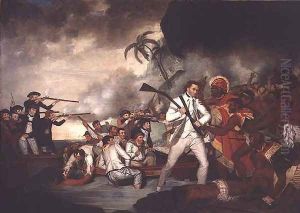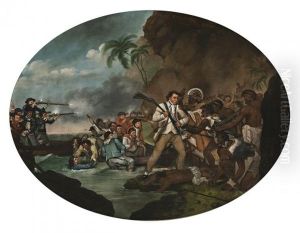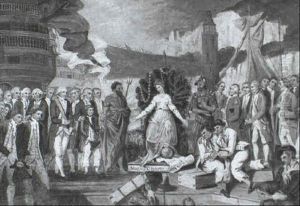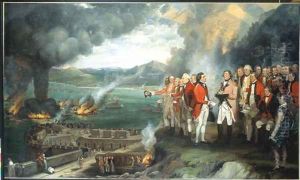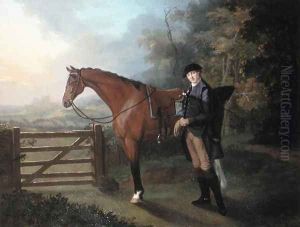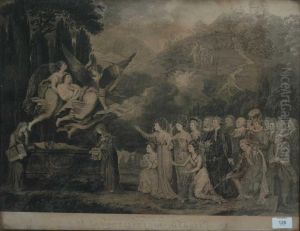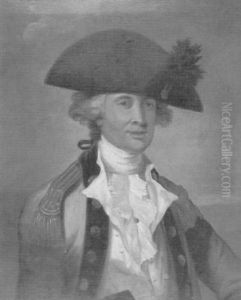George Carter Paintings
George Carter was an English artist known for his historical paintings and theatrical tableaux. Born in Colchester, Essex, in 1737, Carter developed an interest in the arts at an early age. He was not only a painter but also dabbled in poetry and drama. His artistic journey began with an apprenticeship under a local artist, which was a common practice for aspiring artists during that time. However, detailed records of his early training are scarce.
Carter moved to London to further his career, where he became acquainted with the thriving art scene of the 18th century. He was particularly influenced by the works of the old masters and the contemporary historical painters of his time. Carter's paintings often depicted scenes from history, literature, and the Bible, characterized by their dramatic compositions and vibrant use of color. Despite the popularity of such subjects, Carter did not achieve significant fame or financial success during his lifetime.
He attempted to capitalize on the public's interest in theatrical and dramatic works by creating large-scale tableaux vivants, which are static scenes containing one or more actors or models. These works were designed to be viewed in a manner akin to live theater and were often accompanied by a narrative text written by Carter himself. Although innovative, these endeavors did not lead to substantial acclaim.
Carter's life was marked by financial difficulties, which hindered his ability to secure large commissions or patrons. As a result, many of his works were smaller in scale and sold to a more modest market. Nonetheless, his contributions to historical painting and his experiments with mixed-media presentations were notable for their time.
Carter passed away in 1795, leaving behind a modest but interesting body of work that reflects the tastes and interests of the late Georgian period in England. His paintings are held in various collections, but he is not widely known today compared to his more famous contemporaries. Carter's life and art provide an insight into the struggles and innovations of lesser-known artists in the 18th century, who sought to find their place in a competitive and rapidly changing art world.
